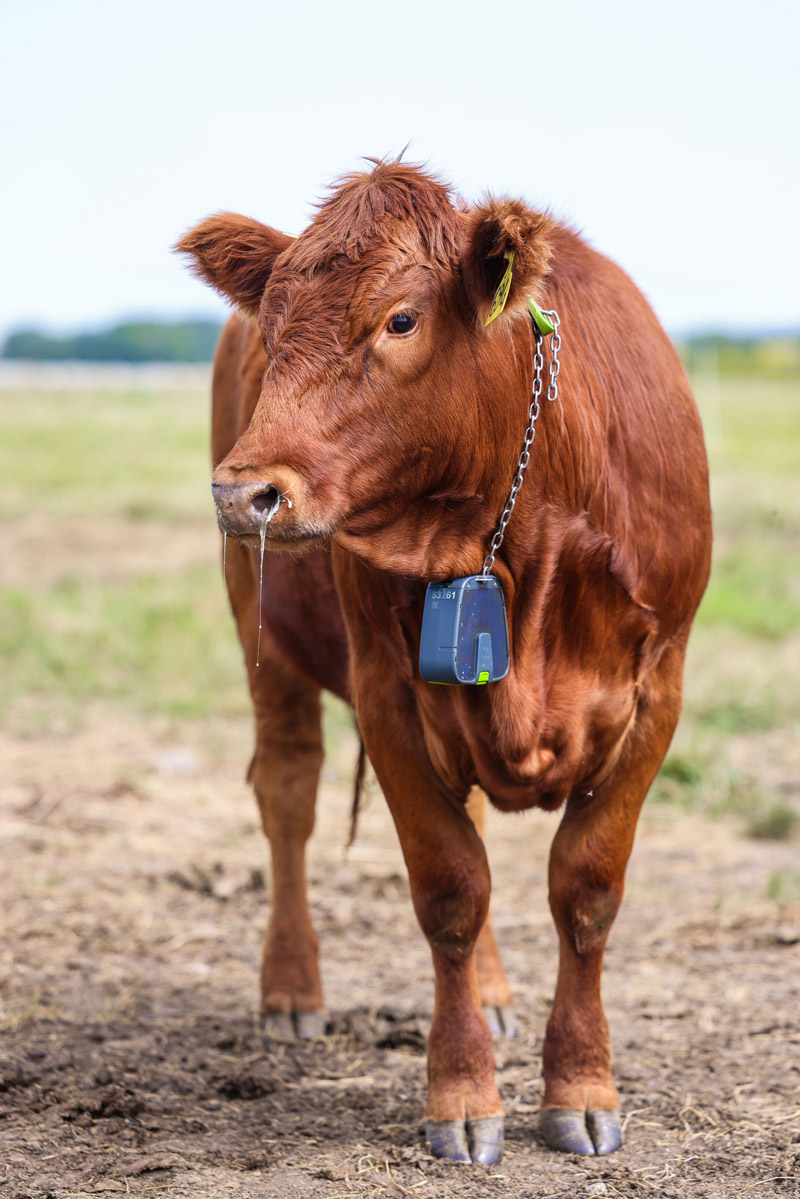Rotational grazing systems can help maximize soil health and pasture productivity, but are hard to implement due to labour shortages and infrastructure costs. To help farmers overcome these challenges, researchers at the Technology Access Centre for Livestock Production (TACLP) at Olds College of Agriculture & Technology performed a test in August 2022 with a virtual fencing system to understand how beef cattle respond to the technology.

The study provided preliminary information on the functionality of the Nofence© collar, an animal-friendly novel virtual fence technology that allows producers to remotely contain and control grazing cattle by using audio cues and electric stimuli from collars instead of physical fences. While Nofence© has been tested in some countries, this was one of the first trials using this technology to manage cattle in Alberta conditions.
During the test, the TACLP used a total of eight Angus crossbred heifers aged 18 months from the College herd and with no prior experience with a virtual fencing system. Half the herd (four animals) were fit with Nofence© collars. Researchers regularly monitored the animals in the field and the activities of the animals using the Nofence© mobile app.
From performing this initial test, TACLP researchers observed animals were quick to learn how the system works and how to respond to the audio cues and electric stimuli (electrical pulse between 1 to 3 kV for one second). It also appeared that by using collars on only half the herd, the team was able to control the whole herd. Researchers also found the GPS accuracy and cell connectivity works well with the Nofence© collars. The TACLP is planning to conduct more comprehensive trials on virtual fencing once additional collars arrive at the College in larger areas and with a larger amount of cattle wearing the collars. Researchers also want to observe using the collars in different seasons under a variety of outdoor temperatures.
Pictured above: Screenshots from the Nofence© mobile app.